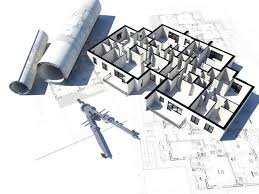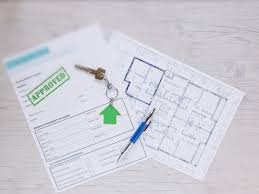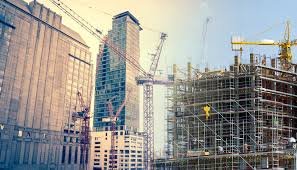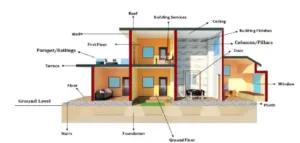Understanding the Real Estate Development Process from Start to Finish
Understanding the Real Estate Development Process from Start to Finish
Real estate development is a complex process that transforms an idea into a tangible property. Whether it’s a residential community, commercial building, or mixed-use development, real estate projects require a deep understanding of market trends, financing, construction, and legal compliance. At Carry Construction, we’ve mastered the development process from start to finish, ensuring each project is completed efficiently, sustainably, and profitably.
In this blog, we’ll guide you through the key stages of the real estate development process, from the initial concept to the finished product.
1. Market Research and Feasibility Study

Before a single brick is laid, comprehensive market research is essential. This step helps developers understand demand, identify target markets, and determine the financial feasibility of the project.
Key Elements:
- Site Selection: Finding the right location is crucial to the success of any real estate development. Factors like accessibility, zoning, and future growth potential play a significant role.
- Demand Analysis: Researching the local market ensures there is a demand for the type of property being developed, whether it’s residential, commercial, or industrial.
- Financial Feasibility: A detailed financial analysis evaluates the project’s profitability, taking into account construction costs, potential revenue, and market trends.
2. Acquisition of Land

Once a feasible project is identified, the next step is acquiring the land. This often involves negotiations with landowners, securing financing, and ensuring that the land is zoned correctly for the intended use.
Key Steps:
- Land Appraisal: Assessing the value of the land is critical to ensure the purchase price aligns with the project’s financial goals.
- Zoning and Permits: Checking zoning laws ensures that the land can be developed for the desired purpose. Any necessary zoning changes must be pursued before development can begin.
- Due Diligence: This includes environmental assessments, surveys, and ensuring that the land is free of legal disputes or contamination.
3. Planning and Design

Once the land is secured, the planning and design phase begins. This is where the project vision takes shape, and collaboration with architects, engineers, and urban planners is essential.
Key Elements:
- Architectural Design: Architects create detailed plans and designs that align with the project’s goals and local regulations.
- Site Planning: Urban planners and engineers ensure the site layout is optimized for functionality, aesthetics, and environmental impact.
- Sustainability: At Carry Construction, we prioritize eco-friendly designs by incorporating sustainable building practices and energy-efficient solutions.
4. Securing Financing

Real estate development is capital-intensive, requiring significant upfront investment. Developers typically secure financing through various sources, such as banks, private investors, or equity partnerships.
Financing Methods:
- Construction Loans: Short-term loans that fund the construction process.
- Equity Financing: Involves selling ownership shares in the project to investors in exchange for capital.
- Permanent Financing: Long-term loans or mortgages that are used once the construction is complete and the project generates revenue.
5. Obtaining Permits and Approvals

Every real estate development project must comply with local building codes and regulations. Obtaining the necessary permits and approvals is a critical step before construction begins.
Types of Permits:
- Building Permits: Required for the physical construction of the project.
- Environmental Permits: These ensure the project complies with environmental laws, especially if it involves wetlands, hazardous materials, or protected species.
- Zoning Approvals: Developers may need to apply for zoning variances or special permits to use the land for a specific purpose.
6. Construction Phase

Once financing and permits are in place, the actual construction begins. This phase involves various contractors, builders, and construction managers working together to bring the project to life.
Key Elements:
- Site Preparation: Clearing the land, grading, and installing necessary infrastructure like roads and utilities.
- Foundation and Structural Work: This is the core of the construction process, where the foundation, frame, and building structure are constructed.
- Project Management: Coordinating materials, labor, and timelines is critical to ensuring the project stays on track and within budget.
7. Marketing and Pre-Sales

While construction is underway, developers typically begin marketing the property. For residential developments, this may involve pre-selling homes or units, while for commercial properties, developers might seek lease agreements with businesses.
Marketing Strategies:
- Real Estate Agents: Engaging local real estate professionals can help generate interest and secure buyers or tenants.
- Digital Marketing: Online listings, social media campaigns, and virtual tours can attract potential buyers or tenants.
- Show Homes or Model Units: For residential developments, having a model unit or show home can give prospective buyers a sense of the finished product.
8. Final Inspections and Approvals

Before a project can be completed, it must pass a series of inspections to ensure it complies with local building codes and safety standards. This ensures that the property is safe for occupancy and meets regulatory requirements.
Inspections Include:
- Building Inspections: A thorough inspection of the structural integrity, electrical systems, plumbing, and fire safety measures.
- Environmental Inspections: Ensures the property complies with environmental regulations.
- Final Occupancy Permit: Once the project passes all inspections, the developer receives a certificate of occupancy, allowing the property to be legally inhabited or used.
9. Project Handover

Once the construction is complete and the inspections are passed, the project is handed over to the owner, tenants, or buyers. This phase involves finalizing any legal documents, warranties, and ongoing maintenance plans.
Key Steps:
- Final Walkthrough: Developers and clients conduct a final walkthrough to ensure everything meets expectations.
- Documentation and Handover: All legal documentation, property titles, and warranties are transferred to the new owner.
- Post-Construction Services: Developers often provide ongoing support, such as maintenance services, to ensure the property continues to operate smoothly.
10. Property Management and Maintenance

After the project is handed over, property management becomes crucial, especially for commercial and multi-unit residential developments. This ensures the property remains in good condition and continues generating revenue for investors.
Property Management Includes:
- Ongoing Maintenance: Regular maintenance and repairs keep the property in prime condition.
- Tenant Management: In rental properties, this includes handling leases, rent collection, and tenant relations.
- Long-Term Value: Effective property management ensures the property retains or increases its value over time.
Conclusion: From Concept to Completion
Real estate development is a multifaceted process that requires careful planning, expertise, and coordination across many disciplines. At Carry Construction, we manage every step of the process—from initial market research to the final handover—ensuring that our clients’ projects are delivered on time, within budget, and to the highest standards of quality.
Whether you’re looking to develop a residential, commercial, or mixed-use property, our experienced team is here to guide you through the entire development process. Contact us today to learn how we can bring your real estate vision to life.
Meta Description: Learn about the real estate development process from market research to project handover. Discover how Carry Construction manages every step to ensure successful projects.
Keywords: Real estate development process, real estate development steps, construction process, property development, Carry Construction, project planning, land acquisition, financing real estate











Add comment